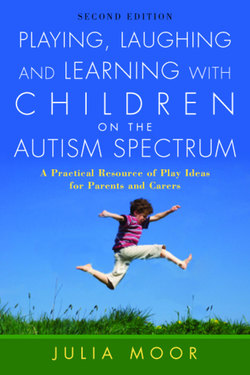Читать книгу Playing, Laughing and Learning with Children on the Autism Spectrum - Julia Moor - Страница 26
На сайте Литреса книга снята с продажи.
Introducing choice and flexibility
ОглавлениеEven though choice and flexibility are difficult areas for children with autism, after your child is used to using picture prompts you can also use them to help him make choices. His first choice may be which reward to have, for example ‘biscuit’ or ‘video’. You might also use them to help him choose an activity for ‘free play’, for example ‘trampoline’ or ‘cars’. Don’t put all the choices on the board; provide two, from which he can choose one and give it to you. Physically giving the card to you and gaining a response demonstrates to him that communication not only involves others, but that it works.
Using pictures to aid communication appeals to the ‘visual learner’ – children with autism often think and learn visually. Pictures are easier to decode than words, they make a direct and concrete link to the activity.
Pictures help to prepare him mentally for the next task and allow him to ‘shift gear’, reducing anxiety and confusion.
Pictures are excellent communication aids; their motivating and ‘attention-grabbing’ qualities make them suitable not only for nonverbal children but for all children on the autism spectrum.
Pictures are a physical aid to help your child exercise choice and control.
Once you’ve started using picture prompts, give your child plenty of time to associate the picture with the activity. It’s tempting to give up too soon if this takes some time. However, if you stick with it you should gain a tool that will reclaim some order in all of your lives.
